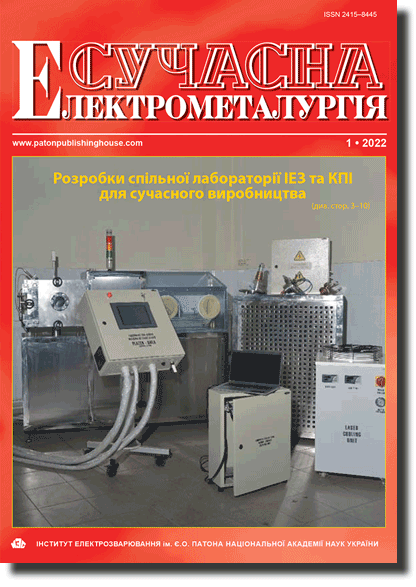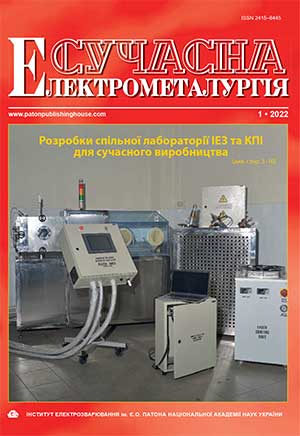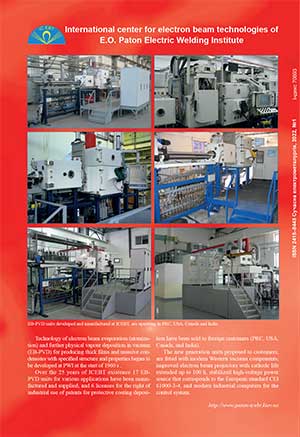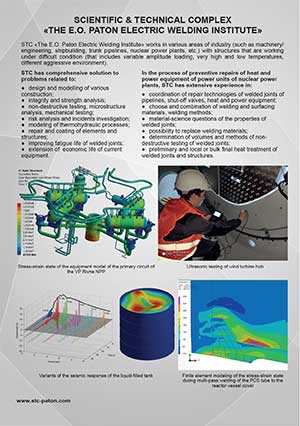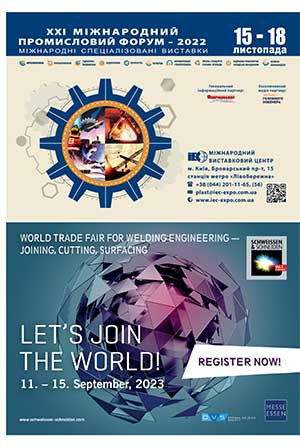| 2022 №01 (07) |
DOI of Article 10.37434/sem2022.01.01 |
2022 №01 (02) |
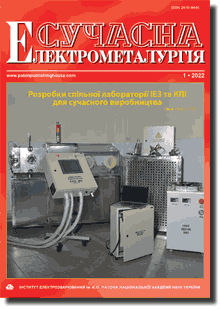
"Suchasna Elektrometallurgiya" (Electrometallurgy Today), 2022, #1, 11-15 pages
Producing ingots of Ti–28Al–7Nb–2Mo–2Cr titanium aluminide by electron beam melting
S.V. Akhonin, A.Yu. Severin, V.O. Beresos, O.M. Pikulin, O.G. Erokhin
E.O. Paton Electric Welding Institute of the NAS of Ukraine. 11 Kazymyr Malevych Str., Kyiv, 03150, Ukraine. E-mail: office@paton.kiev.ua
Abstract
The possibility of producing by electron beam melting the ingots of titanium aluminide of Ti–Al system, additionally alloyed by refractory elements, namely niobium, chromium and molybdenum, was studied. A procedure of adding the refractory elements was developed, and technological modes were calculated, which allow optimizing the alloying element evaporation during melting. Test melting of Ti–28Al–7Nb–2Mo–2Cr intermetallic alloy was conducted in UE-121 electron beam unit. An ingot of 200 mm diameter was produced and its quality, structure and mechanical properties were studied. Ref. 11, Tabl. 2, Fig. 5.
Keywords: electron beam melting; intermetallics; ingot; chemical composition; structure; mechanical properties; high-temperature strength
Received 24.01.2022
References
1. Appel, F., Ohring, M., Paul, J.D.H. et al. (2001) Proc. of 2nd Intern. Symp. on Structural Intermetallics. The Minerals, Metals & Mater. Soc., 63-72.2. Peters, M., Leyens, C. (2003) Titanium and titanium alloys. Wiley-VCH, Weinkeim, Germany.
3. Pavlinich, S.P., Zaitsev, M.V. (2018) Application of intermetallic titanium alloys in casting of assemblies and GTE blades with lightweight heat-resistant structures for aircraft engines of new generation. Vestnik UGATU, 4, 200-202 [in Russian].
4. Antashov, V.G., Nochovnaya, N.A. Ivanov, V.I., (2002) Tendency of development of heat-resistant titanium alloys for aircraft engine construction. Tekhnologiya Lyogkikh Splavov, 4, 72-76 [in Russian].
5. Kulikovsky, R.A., Pakholka, S.N., Pavlenko, D.V. (2015) Prospects of commercial application of titanium aluminides in aircraft engine construction. Stroitelstvo, Materialovedenie, Mashinostroenie, 80, 369-372 [in Russian].
6. Kablov, D.E., Panin, P.V., Shiryaev, A.A., Nochovnaya, N.A. (2014) Experience of use of vacuum-arc furnace ALD VAR L200 for melting of heat-resistant alloy ingots based on titanium aluminide. Aviatsionnye Materialy i Tekhnologii, 2, 27-33 [in Russian]. https://doi.org/10.18577/2071-9140-2014-0-2-27-33
7. Guther, V., Chatterjee, A., Kettner, H. (2003) Status and prospects of gamma-TiAl ingot production. Gamma Titanium Aluminides 2003, Clements, Kim, Rosenberger. TMS, 241-247.
8. Musatov, M.I., Fridman, A.I. (1993) Technological schemes of production of titanium alloy ingots using skull melting. Titan, 1, 35-38 [in Russian].
9. Akhonin, S.V., Severin, A.Yu., Berezos, V.A. (2015) Development of technology of adding the refractory alloying elements into alloys on the base of Ti2AlNb intermetallic in electron beam melting. Sovrem. Elektrometall., 3, 12-15 [in Russian]. https://doi.org/10.15407/sem2015.03.02
10. Akhonin, S.V., Severin, A.Yu., Berezos, V.A. et al. (2020) Producing large-sized ingots of titanium aluminides by EBM method. Suchasna Elektrometal., 2, 18-22 [in Russian]. https://doi.org/10.37434/sem2020.02.03
11. Povarova, K.B. et al. (2003) Express evaluation of heat-resistance of cast alloys based on TiAl. Metally, 1, 91-98 [in Russian].
Advertising in this issue:
The cost of subscription/purchase order journals or individual articles
| Journal/Currency | Annual Set | 1 issue printed |
1 issue |
one article |
| TPWJ/USD | 384 $ | 32 $ | 26 $ | 13 $ |
| TPWJ/EUR | 348 € | 29 € | 24 € | 12 € |
| TPWJ/UAH | 7200 UAH | 600 UAH | 600 UAH | 280 UAH |
| AS/UAH | 1800 UAH | 300 UAH | 300 UAH | 150 UAH |
| AS/USD | 192 $ | 32 $ | 26 $ | 13 $ |
| AS/EUR | 180 € | 30 € | 25 € | 12 € |
| SEM/UAH | 1200 UAH | 300 UAH | 300 UAH | 150 UAH |
| SEM/USD | 128 $ | 32 $ | 26 $ | 13 $ |
| SEM/EUR | 120 € | 30 € | 25 € | 12 € |
| TDNK/UAH | 1200 UAH | 300 UAH | 300 UAH | 150 UAH |
| TDNK/USD | 128 $ | 32 $ | 26 $ | 13 $ |
| TDNK/EUR | 120 € | 30 € | 25 € | 15 € |
AS = «Automatic Welding» - 6 issues per year;
TPWJ = «PATON WELDING JOURNAL» - 12 issues per year;
SEM = «Electrometallurgy Today» - 4 issues per year;
TDNK = «Technical Diagnostics and Non-Destructive Testing» - 4 issues per year.





